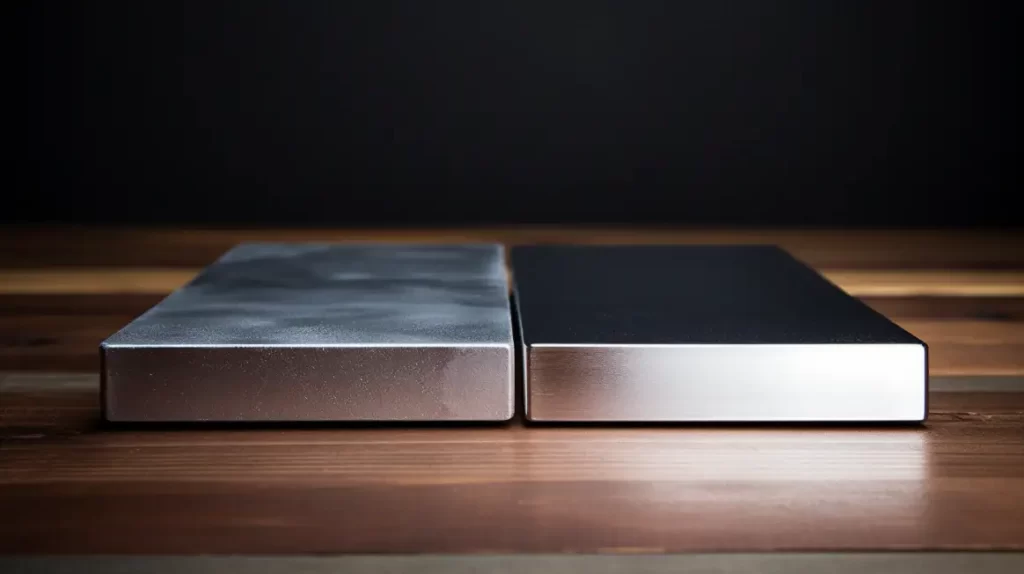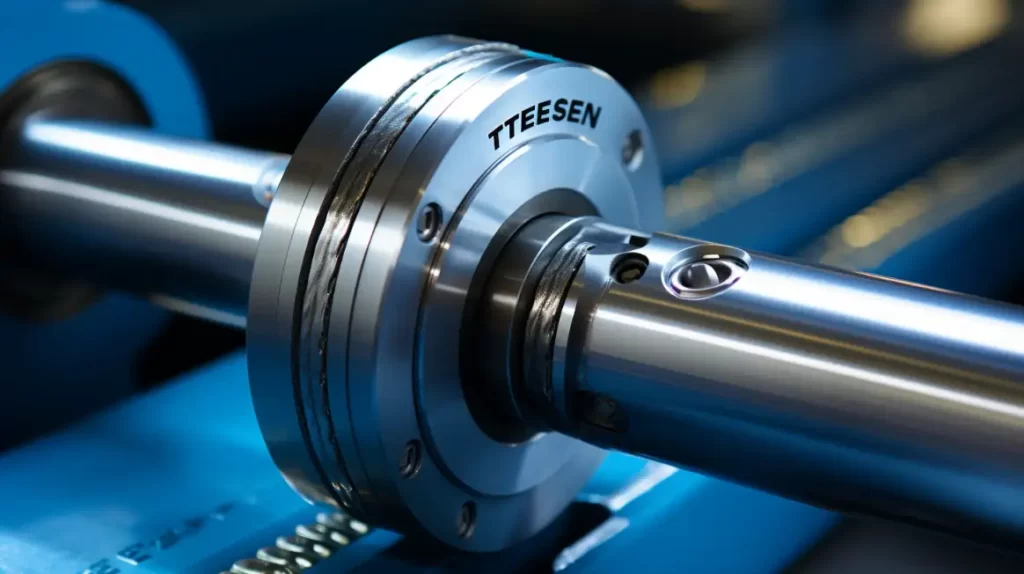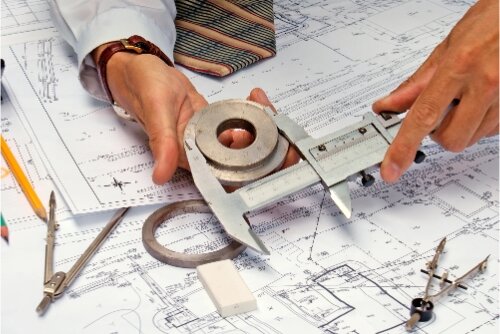If you’re planning a project that involves aluminum parts, you may feel stuck choosing between 6061 and 6063. Both are popular alloys. Both are widely available. But they serve very different needs. That’s why understanding their strengths, weaknesses, and best uses is key.
The choice between Aluminum 6061 and 6063 depends on your project requirements. Aluminum 6061 is stronger and better for structural applications. It works well in parts needing toughness, corrosion resistance, and machinability. Aluminum 6063 is more suitable for decorative or architectural uses. It offers excellent finishing qualities and is easier to extrude into complex shapes.
There’s more you should know before placing an order. Let’s look at how 6061 and 6063 compare in real manufacturing use.

Understanding Aluminum 6061
Aluminum 6061 belongs to the 6xxx series. This means it includes magnesium and silicon as its main alloying elements. These give the material a good mix of strength and corrosion resistance.
6061 is heat-treatable. This means it can be strengthened through heating and cooling processes. It is available in several tempers, with 6061-T6 being the most common for strong, tough applications.
The typical composition of Aluminum 6061 includes:
- Aluminum: ~97.9%
- Magnesium: 1.0%
- Silicon: 0.6%
- Small amounts of copper, chromium, and iron
This alloy has a tensile strength of around 45,000 psi (310 MPa) and a yield strength of about 40,000 psi (276 MPa). It also has good hardness and durability. It resists cracking under stress and maintains form over time.
Its melting point is about 1,080°F (582°C). It machines well, welds easily, and responds well to coatings and surface treatments. This makes it a favorite for both structural and machined parts.
Understanding Aluminum 6063
Aluminum 6063 is part of the same 6xxx series as 6061. It also contains magnesium and silicon as the main elements. But it has lower amounts of each, which gives it a different set of properties.
6063 is widely used in extrusion. This means it’s easy to push through a die to make shapes like tubes, angles, and frames. It’s known for creating smooth, clean surfaces without much effort.
The typical composition of Aluminum 6063 includes:
- Aluminum: ~98.9%
- Magnesium: 0.7%
- Silicon: 0.4%
- Trace amounts of iron, copper, manganese, chromium, and zinc
It has a tensile strength of around 27,000 psi (186 MPa) and a yield strength of about 21,000 psi (145 MPa). These are lower than 6061 but still strong enough for many light-duty parts.
It also resists corrosion well and accepts anodizing smoothly. This makes it ideal when appearance matters. It’s a go-to choice for window frames, railings, sign frames, and display structures.

Aluminum 6061 vs 6063: Key Differences
When deciding between 6061 and 6063, looking at their physical and performance traits helps narrow it down. Here’s how they differ in key areas that affect how your parts perform.
Mechanical Properties
6061 offers higher strength and toughness. 6063 is softer but easier to shape and finish. These differences play a big role in choosing the right alloy.
Tensile and Yield Strength Comparison
Aluminum 6061 is much stronger.
- Tensile strength: ~45,000 psi
- Yield strength: ~40,000 psi
Aluminum 6063 has lower strength.
- Tensile strength: ~27,000 psi
- Yield strength: ~21,000 psi
This makes 6061 better for load-bearing structures, while 6063 suits non-structural parts.
Hardness Ratings
6061 has higher hardness. On the Brinell scale, it’s around 95.
6063 is softer, with a Brinell hardness closer to 73.
This affects how each alloy holds up under pressure or wear. 6061 is better where durability matters.
Fatigue Resistance
6061 has better fatigue resistance. It handles repeated stress cycles more effectively. This matters for parts that bend, vibrate, or bear loads over time.
6063 is less suitable for fatigue-prone parts. It works best in static applications.
Thermal and Electrical Conductivity
Both alloys conduct heat and electricity, but 6063 performs slightly better in these areas.
Thermal Conductivity Differences
6063 offers higher thermal conductivity. It transfers heat faster, around 201 W/m·K.
6061 transfers heat at about 167 W/m·K.
This can make 6063 a better fit for heat sinks or other cooling applications.
Electrical Conductivity Performance
Electrical conductivity is higher in 6063.
6063: ~53% IACS
6061: ~40% IACS
For parts that carry current or need good thermal flow, 6063 may be more efficient.
Corrosion Resistance
Both alloys resist corrosion well. 6061 has good corrosion resistance in most environments. But it can suffer in marine or salty conditions. 6063 performs slightly better in wet or outdoor settings. It forms a smoother oxide layer, which adds protection.
Machinability
Aluminum 6061 machines easily. It’s straightforward to cut, drill, and shape, making it ideal for complex or precise parts. 6063 also machines well, but its softer nature can lead to less accurate cuts. Choose 6061 for precision work and 6063 for simpler shapes.
Weldability
Both alloys weld easily, but 6061 is more commonly used. It provides stronger welds that hold up under stress. However, welding 6061 can lower its strength around the weld area, so heat treatment afterward helps restore toughness. Aluminum 6063 also welds smoothly, making it practical for lighter, non-structural projects.
Weight and Density
There’s little difference in weight.
- 6061 density: ~2.70 g/cm³
- 6063 density: ~2.69 g/cm³
The change is too small to affect most projects. Weight won’t be a deciding factor between them.
Heat Treating and Temper Designations
Heat treating strengthens both alloys, but each responds differently. 6061 is often available in T6 temper, which maximizes strength through heat treatment.
6063 usually appears in T5 or T52 tempers, enhancing surface finish and ease of extrusion rather than strength. Matching the alloy’s temper to your needs is critical for optimal performance.
Cost and Availability
Aluminum 6061 typically costs slightly more than 6063 due to its higher strength and popularity. Both are widely available, though 6061 is more common in structural forms like plates and bars. 6063 often comes in extruded shapes like tubing or architectural profiles, offering more specialized applications.
Environmental Factors
6063 is a better pick for humid, coastal, or exposed environments. It resists pitting and weather wear. 6061 can corrode faster without proper surface protection. Anodizing or coating can help both alloys last longer outdoors.
Aluminum 6061 vs 6063: Quick Side-by-Side Comparison
Need a fast way to decide between Aluminum 6061 and 6063? This simple table breaks down the key differences in strength, workability, conductivity, and typical uses—helping you choose the best alloy for your next project at a glance.
| Feature | Aluminum 6061 | Aluminum 6063 |
|---|---|---|
| Strength | Higher tensile and yield strength | Lower strength, suitable for light-duty |
| Hardness | Harder (Brinell ~95) | Softer (Brinell ~73) |
| Machinability | Excellent for precision machining | Fair, more suited for simple shaping |
| Weldability | Strong welds, may need post-treatment | Good weldability, less strength loss |
| Corrosion Resistance | Very good, improved with anodizing | Excellent, better finish after anodizing |
| Thermal Conductivity | ~167 W/m·K | ~201 W/m·K |
| Electrical Conductivity | ~40% IACS | ~53% IACS |
| Common Use | Structural, mechanical parts | Architectural, decorative profiles |
| Formability | Moderate | High, ideal for extrusion |
| Cost | Slightly more expensive | Slightly cheaper |
| Availability | Widely available in bars, plates | Common in extruded shapes |
Aluminum 6061 vs 6063: Choosing the Right Alloy for Your Project
Each alloy has its strengths. The right choice depends on your design, function, and finish goals. Here’s how to match the alloy to your project.
Factors to Consider
Start by thinking about your application’s needs:
- Does the part need to hold weight or resist stress?
- Will the part be visible and need a clean finish?
- Is precise machining required?
- What’s your production method—extrusion, machining, or welding?
These questions help guide the decision. Strength, appearance, workability, and budget all play a role.
When to Choose 6061?
Pick 6061 if your project requires:
- High strength or structural support
- Good machinability
- Strong weld joints
- Exposure to stress or fatigue over time
It works well for aerospace parts, fixtures, frames, mechanical components, and tools. It also performs better where wear resistance or tight tolerances matter.
When to Choose 6063?
Go with 6063 if your project needs:
- Clean, smooth surface finishes
- Complex extruded shapes
- Lower strength with better formability
- Lightweight, decorative, or architectural features
It’s a smart choice for window frames, trim, railings, sign frames, and display units. It gives you better surface results and is easier to shape in extrusion projects.
Conclusion
Aluminum 6061 and 6063 each serve different needs. 6061 is stronger, better for structural parts, and easier to machine. 6063 is smoother, more suited for decorative shapes, and easier to extrude. Choose 6061 when strength and performance matter. Choose 6063 when appearance and ease of forming are more important.
Still not sure which alloy fits your part? Contact us today for a free consultation. Our team will help you pick the right material based on your design, budget, and function.
Hey, I'm Kevin Lee

For the past 10 years, I’ve been immersed in various forms of sheet metal fabrication, sharing cool insights here from my experiences across diverse workshops.
Get in touch

Kevin Lee
I have over ten years of professional experience in sheet metal fabrication, specializing in laser cutting, bending, welding, and surface treatment techniques. As the Technical Director at Shengen, I am committed to solving complex manufacturing challenges and driving innovation and quality in each project.





One Response